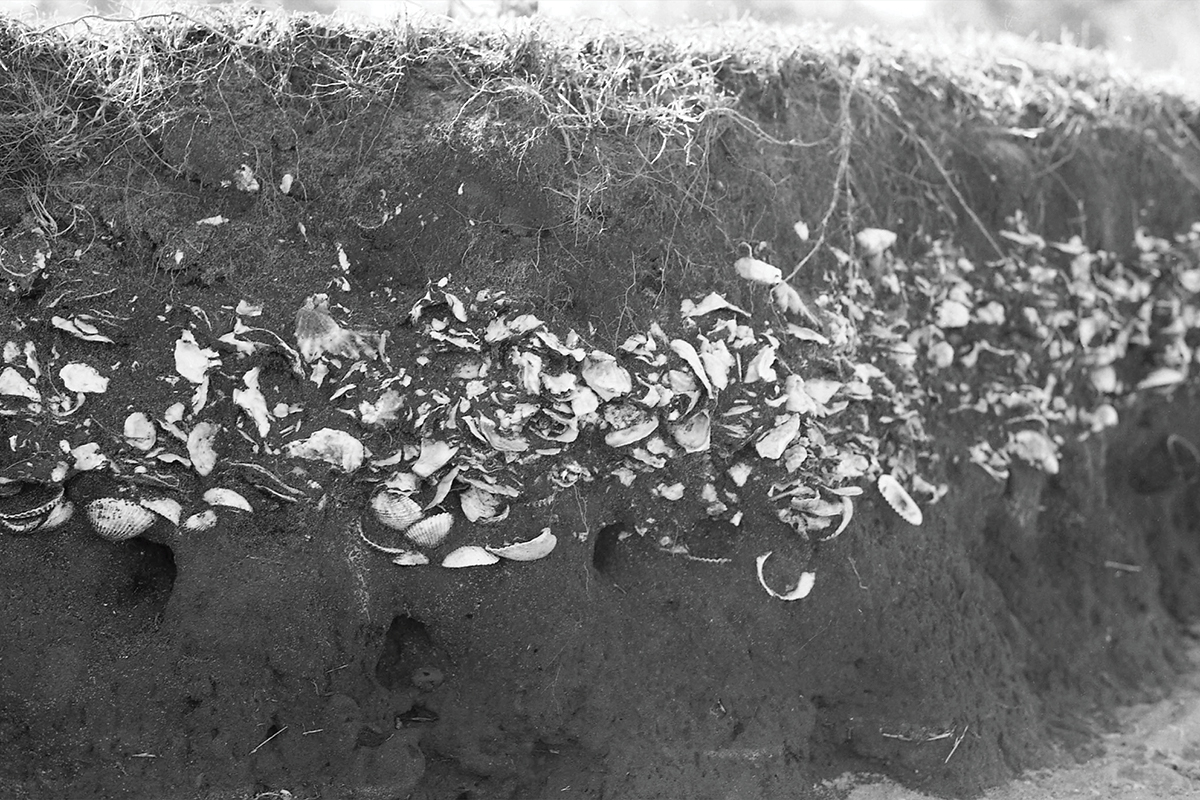
1986 photograph of a Gold Coast shell midden
In pre-European times the waterways surrounding Hope Island station contained a range of flora and fauna that provided local Aboriginal people with abundant food supplies and resources, among the most important being shellfish which are preserved in shell middens. Shell middens are accumulations of discarded shell waste and other materials associated with human occupation and have been located through archaeological excavation nearby within Hope Island. These middens are a testament to the long history of Aboriginal people in the area and their deep connection to the land and sea throughout millennia.
Long known by local Aboriginal people, a survey of the area located an extensive shell midden on the southern bank of the Coomera River that contained shells from oysters, cockles, whelks, mussels, and pipis. The number and relative abundance of shell species changes through the layers of the nearly 1m deep midden, providing a picture of how food resources changed over time. Radiocarbon dating provided ages for the site from as old as 4350 years ‘Before Present’ (BP) until after European contact.
 Artwork developed for public art installation at Hope Island station
Artwork developed for public art installation at Hope Island station
In post-European times, the property that Hope Island station sits upon today is located on former Portion 266, Parish of Coomera. This 160-acre (65 hectares) block situated on the southern bank of the Coomera River was not part of the original Hope Island plantation, which adjoins its eastern boundary, but was a separate selection taken out by Samuel Fallows (Fallowes) Shelley (Shelly) in 1866, known as Shelley’s (Shelly’s) Farm.
The block was initially developed for sugar production but later turned to other crops as sugar production in the district declined. The Shelley (Shelly) family owned the property until a devastating flood in 1890 which led to Samuel Shelley becoming insolvent. At the time the block was producing potatoes, yet another food source. In 1995, after being handed back to the Shelley (Shelly) family for a time, the property was then resumed for the transport corridor that exists to this day.
It seems the Hope Island area has always been a place of abundant water and food resources. Cultural heritage sites such as shell middens are reminders of the connection between people, land, and water. Understanding of these sites and the more recent history of an area, adds to a growing knowledge base and contributes to the cultural identity of Aboriginal people, and the shared history of Aboriginal and non-Indigenous people on the Gold Coast as it exists today.